
- Poems Poetry Art
- Author
- Alfred French (11)
- Charles Bukowski (12)
- Edgar Allan Poe (16)
- Edmund Spenser (7)
- Eyvind Earle (15)
- Jack Hirschman (16)
- John Hejduk (9)
- John Milton (7)
- Lance Woolaver (7)
- Lindley Murray (8)
- Patti Smith (16)
- Reilly Rhodes (11)
- Shel Silverstein (9)
- Thornton Wilder (6)
- Unknown (9)
- Various (40)
- William Blake (9)
- William Shakespeare (7)
- Wulf Segebrecht (17)
- Yoko Ono (6)
- ... (3205)
- Format
- Board Book (2)
- Books (3)
- Box Set (2)
- Broadside (2)
- Chapbook / Pamphlet (9)
- Cover Rigid (3)
- Hard Cover (2)
- Hardback (10)
- Hardcover (499)
- Leather (6)
- Library Binding (2)
- Mixed Lot (6)
- Paperback (100)
- Paperback / Softback (4)
- Perfect (8)
- Physical (6)
- Record (2)
- Softcover (13)
- Trade Paperback (122)
- Unknown (8)
- ... (2634)
- Isbn
- 0791409910 (4)
- Doesnotapply (10)
- 2911127552 (4)
- 9780300206074 (4)
- 9780500510148 (4)
- 9780520222434 (4)
- 9780692125199 (3)
- 9780742511279 (6)
- 9780801437588 (3)
- 9780820330877 (4)
- 9780962264603 (4)
- 9780982340325 (3)
- 9780982410059 (4)
- 9780996067614 (10)
- 9781419721977 (10)
- 9781433140785 (3)
- 9781457607301 (4)
- 9781852424329 (4)
- 9781933947273 (4)
- 9782364370319 (10)
- ... (3341)
- Item Length
- Language
- Arabic (3)
- Czech & English (11)
- Dutch (5)
- Eng, Gec (3)
- English (1337)
- English, Japanese (3)
- English, Persian (3)
- English, Russian (9)
- French (43)
- Germ, German (4)
- German (45)
- German, Germ (12)
- Hebrew (3)
- Italian (11)
- Japanese (18)
- Latin (11)
- Persian (7)
- Portuguese (3)
- Russian (19)
- Spanish (13)
- ... (1880)
- Type
Anselm Kiefer Neo-expressionism Painter Sculptor New Symbolism Modern Art German
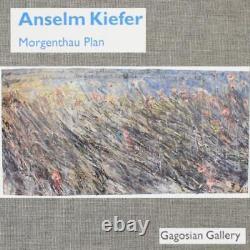
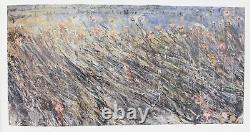
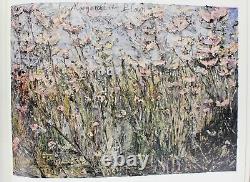
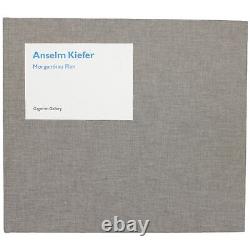

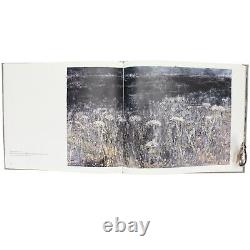
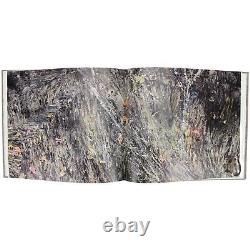
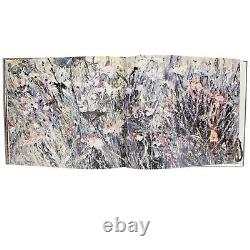
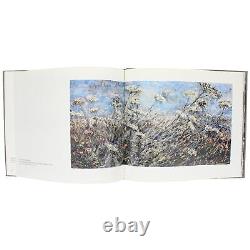
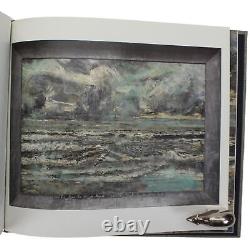
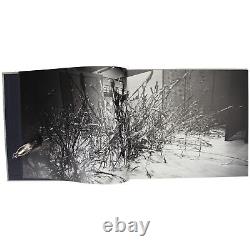




Anselm Kiefer - Morgenthau Plan. Published by Gagosian Gallery, Le Bourget, Paris, 2013. Very good hardcover, no dustjacket as issued. Tight binding, solid spine, clean unmarked text.
Illustrated, Oblong quarto, 128 pages, grey buckram cloth boards. Throughout his nearly fifty-year career, Kiefer has never been afraid to wrestle with history.
His art-particularly in its worked and layered surfaces weathered by time and nature-is a visceral and poetic consideration of the past as a means to understand our collective present and, by implication, our future. This monumental work references a plan, devised by U. Secretary of the Treasury Henry Morgenthau during World War II, to destroy Germany's factories and turn the country into farmland after the Allied victory.
Here, Kiefer imagined this pastoral outcome, with postwar Germany as a vast green country blooming with flowers. Anselm Kiefer (born 8 March 1945) is a German painter and sculptor. He studied with Peter Dreher and Horst Antes at the end of the 1960s. His works incorporate materials such as straw, ash, clay, lead, and shellac.The poems of Paul Celan have played a role in developing Kiefer's themes of German history and the horrors of the Holocaust, as have the spiritual concepts of Kabbalah. The artist went on to study under the influential Conceptual artist Joseph Beuys at the Kunstakademie Düsseldorf. While in Düsseldorf during the 1970s, he developed an interest in working with diverse materials and was influenced by the Neo-Expressionist painters Georg Baselitz and Jörg Immendorf. In his entire body of work, Kiefer argues with the past and addresses taboo and controversial issues from recent history. Themes from Nazi rule are particularly reflected in his work; for instance, the painting Margarethe (oil and straw on canvas) was inspired by Celan's well-known poem "Todesfuge" ("Death Fugue").
His works are characterized by an unflinching willingness to confront his culture's dark past, and unrealised potential, in works that are often done on a large, confrontational scale well suited to the subjects. It is also characteristic of his work to find signatures and names of people of historical importance, legendary figures or historical places. All of these are encoded sigils through which Kiefer seeks to process the past; this has resulted in his work being linked with the movements New Symbolism and Neo-Expressionism.
His works are held in the collections of the Art Institute of Chicago, The Museum of Modern Art in New York, the Tate Gallery in London, The Albright Knox Art Gallery and the Stedelijk Museum of Modern Art in Amsterdam, among others. ANSELM KIEFER NEO-EXPRESSIONISM PAINTER SCULPTOR NEW SYMBOLISM MODERN ART GERMAN.
